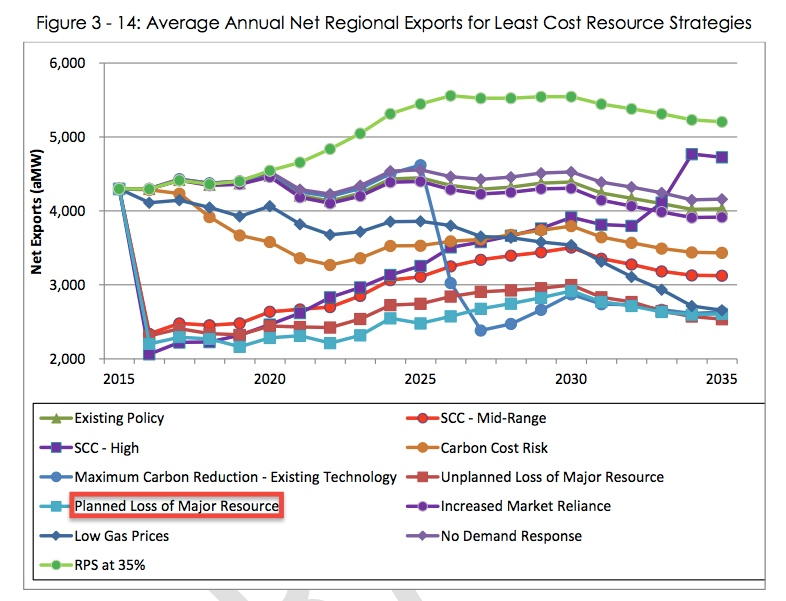forum
library
tutorial
contact

State Policies Could Pit
Salmon Against Clean Air
by Nigel Jaquiss
Willamette Week, January 24, 2018
|
the film forum library tutorial contact |

|
State Policies Could Pit
by Nigel Jaquiss
|
As Oregon enters debate over "cap and invest" legislation, utilities wonder if Gov. Kate Brown gives a dam.
 Two of Oregon's highest environmental priorities are on a collision course.
Two of Oregon's highest environmental priorities are on a collision course.
Next month, Democratic lawmakers will introduce ambitious "cap and invest" legislation aimed at taxing carbon emissions in order to reduce them.
But Oregon Gov. Kate Brown has another priority: salmon. In a long-running federal lawsuit in Portland, Brown pushed to increase the number of endangered salmon in the Columbia River by spilling more water over the tops of Bonneville Power Association dams.
But when water goes over dams, it bypasses power-generating turbines, which can leave public utilities across Oregon short of power. To compensate, the utilities will turn to fossil fuels. That runs counter to the carbon-reduction legislation that is a Democratic priority.
In Nov. 17 comments on the proposed carbon legislation, publicly owned Oregon utilities highlighted the policy conflict, which they say could cause the emission of up to 840,000 additional tons of carbon dioxide annually. That's about a 4 percent increase in utility emissions, when the state lags far behind its carbon reduction goals.
"We are concerned that the state continues to press for outcomes that will result in increased hydro spill that clearly will increase greenhouse gas emissions with no apparent or clear benefit to Endangered Species Act-listed fish," the utilities wrote in a Nov. 17 letter. "It is time for Oregon to reconcile this matter."
A spokesman for Brown says the governor's priorities can be made to work together. "It's a false premise that Oregon cannot have healthy fish habitats and clean air at the same time," Bryan Hockaday says.
But here's how the policies could play out:
Gov. Brown wants the Bonneville Power Administration to spill more water over Columbia River dams to benefit endangered salmon.
But utilities say spilling more water over the dams can reduce the supply of cheap hydropower.
To make up for the lost electricity, utilities say, would require burning natural gas and coal, producing significant amounts of carbon dioxide annually.
That could offset much of the carbon reduction Democrats seek with cap and invest legislation.
Related Pages:
Spill is Not a Winner for Fish by Ken Earlywine, The Columbian, 1/21/18
The reality -- as detailed in the Northwest Power & Conservation Council's Seventh Power Plan regarding the loss of four Lower Snake River dams -- is that the Northwest typically exports 4200 MW of its power to California and other regions. The lost power of spilling more over spillways to benefit salmon & steelhead migrations, or from the loss of the four Lower Snake River dams (which would be far more beneficial for salmon & steelhead), would simply be a reduction in exports to other regions.Looking to fact check me? Look for Figure 3-14 Average Annual Net Regional Exports for Least Cost Resource Strategies. The scenario named "Planned Loss of a Major Resource" is closely modeled to a removal of one dam every three years. You may also notice that Energy Conservation in the Northwest, as dictated by the Northwest Power & Conservation Council, is currently replacing one Lower Snake River dam each year.
-- posted to Willamette Week comments by Scott Levy, bluefish.org
Nigel Jaquiss
State Policies Could Pit Salmon Against Clean Air
Willamette Week, January 24, 2018
See what you can learn learn more on topics covered in the film
see the video
read the script
learn the songs
discussion forum
